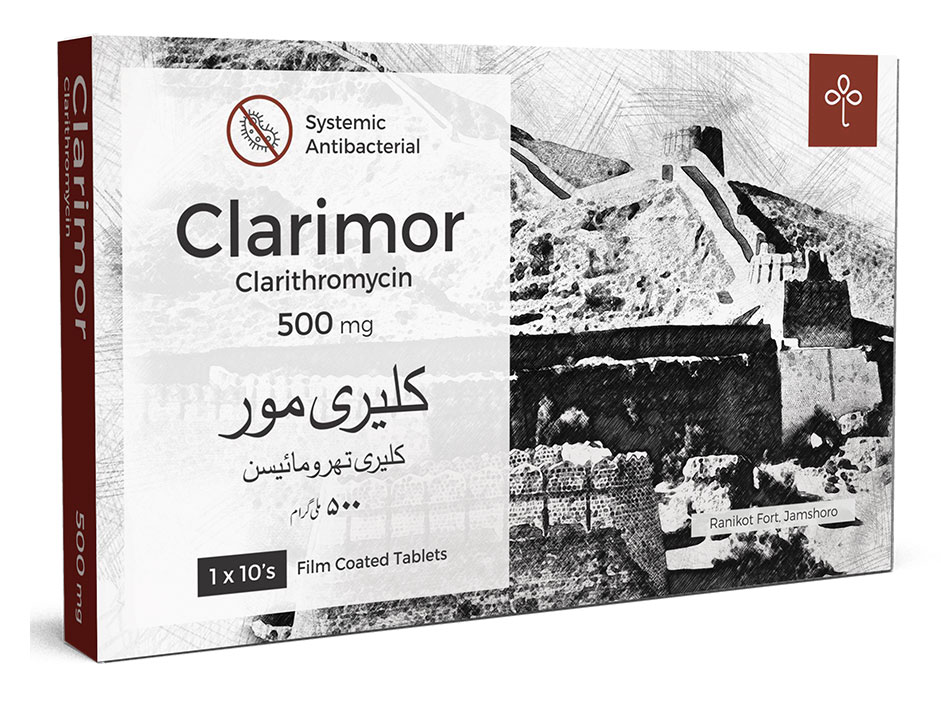Clarimor Macrolides
Clarithromycin, a semisynthetic macrolide antibiotic, which inhibits bacterial protein synthesis

Clarimor Clarithromycin 500mg
-
Adults
Infection
Dosage (every 12 hours)
Duration (days)
Acute bacterial exacerbation of chronic bronchitis
250 to 500mga
7b-14
Acute maxillary sinusitis
500mg
14
Community-acquired pneumonia
250mg
7cs-14
Pharyngitis/ Tonsillitis
250mg
10
Uncomplicated skin and skin structure infections
250mg
7-14
Treatment and prophylaxis of disseminated Mycobacterium avium disease
500mgd
As directed by physician
H. pylori eradication to reduce the risk of duodenal ulcer recurrence with amoxicillin and omeprazole or lansoprazole
50mg + 30mg Lansoprazole or 20mg Omeprazole + 1000mg Amoxicillin
10-14 Additional 18 days of omeprazole 20mg OD for ulcer healing and symptom relief
H. pylori eradication to reduce the risk of duodenal ulcer recurrence with omeprazole
500mg every 8 hours + 40mg omeprazole OD
14 Additional 14 days omeprazole 20mg OD for ulcer healing and symptom relief
a. For M. catarrhalis and S. pneumoniae use 250mg
For H. influenza and H. parainfluenzae use 500mg
b. For H. parainfluenzae, the duration of therapy is 7 days
c. For H. influenza, the duration of therapy is 7 days
d. Clarithromycin therapy should continue if clinical response is observed. Clarithromycin can be discontinued when the patient is considered at low risk of disseminated infection.
-
- Known hypersensitivity to clarithromycin, erythromycin or any of the macrolide antibiotics.
- Patients with a history of cholestatic jaundice/hepatic dysfunction associated with prior use of clarithromycin.
- Concomitant administration of clarithromycin and cisapride, pimozide, astemizole, terfenadine and ergotamine or dihydroergotamine is contraindicated.
- Patients with history of QT prolongation (congenital or documented acquired QT prolongation) or ventricular cardiac arrhythmia, including torsades de pointes.
- Concomitant administration with ticagrelor or ranolazine.
- Concomitant administration with HMG-CoA reductase inhibitors that are extensively metabolized by CYP3A4 (lovastatin or simvastatin) due to the increased risk of myopathy, including rhabdomylosis. Treatment with these agents should be discontinued during clarithromycin treatment.
- Patients with hypokalaemia (risk of prolongation of QT-time)
- Concomitant administration of clarithromycin and colchicine in patients with renal or hepatic impairment.
